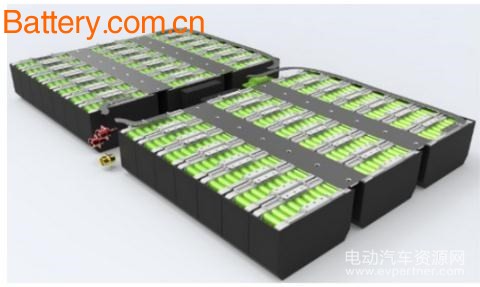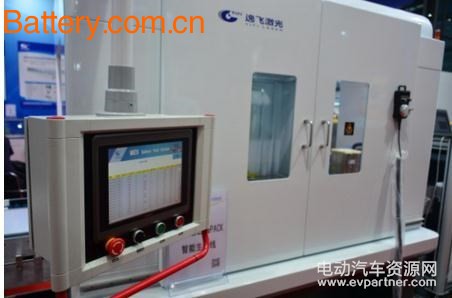Since its inception in 1990, lithium batteries have been highly sought after by 3C digital and power tools due to their high energy density, high voltage, environmental protection, long life and fast charging, especially for the new energy vehicle industry. prominent. As a source of power for new energy vehicles, the lithium battery industry has great potential. It is not only an important part of the country's strategic development. It is expected that in the next 5 to 10 years, its industrial chain will realize the self-improvement and development of the industry's ecology, and the industry scale is expected to break through. 160 billion yuan. It is well known that the automation of assembly lines is an important factor in determining product quality and production efficiency from the lithium battery cell to the automation module to the PACK line. In recent years, with the increase of experience and the improvement of automation integration capabilities, domestic high-end intelligent equipment manufacturing enterprises are building automatic/semi-automatic assembly lines for power batteries, automation equipment integration, information collection and transmission (MES), and unmanned workshops. Hardware management systems and other aspects of the show and occupy a place. This article will start from the characteristics of domestic battery modules and PACK equipment and market demand, and introduce the current market shape. Battery module The lithium battery module is a module consisting of several to hundreds of battery cells connected in parallel and in series. In addition to the mechanism design part, together with the battery management system and the thermal management system, a lithium battery can be formed. Package system. In general, whether it is a soft pack, a square, a cylinder or a 18650 battery, the automated assembly process of the module begins with cell loading. The incoming material may be the packaging provided by the original supplier, or it may be a special tray that has been uniformly arranged by the manufacturer after testing. The loading process can be manual or it can be automatically fed through a conveyor belt and then grabbed by a robot through a gripper. At the same time, the reading of the battery core (acquisition of the identity data of a single battery core), polarity detection of the battery core (with or without reverse direction), cell sorting and matching, and rejection of defective products. After the initial inspection and sorting, the materials will be separately processed according to the module and process requirements, such as laser cleaning - coating - cell stack - battery box assembly - ear cutting and shaping - module shell laser welding - module Laser coding - screwing - module inspection - connecting piece laser welding - BMS system connection - module final inspection - module blanking and other processes. Lithium battery module At present, due to the different requirements of various auto manufacturers in the market, almost no module and production process are the same, and this also puts more demands on the automated production line. In addition to meeting the above hardware configuration and process requirements, a good automated production line needs to focus on compatibility and “full line beatâ€. Since the module is not fixed, the incoming battery, housing, PCB board, connecting piece, etc. may change, and the compatibility of the production line is particularly important. For the current power battery industry, the automation requirements of the modules are relatively high, and the advantages of applying robots and special equipment are obvious due to the complexity of the process and the requirements of the working environment. Battery PACK PACK is the meaning of packaging, packaging and assembly. The process is divided into three parts: processing, assembly and packaging. PACK production lines generally only need to undertake two functions: transmission and detection. At present, semi-automatic PACK assembly lines are widely used by various manufacturers, mainly for PACK on-line, off-line, inspection, in-plant transmission and packaging. Among them, AGV trolleys, power-assisted robot arms, roller lines, booms, etc. are simple and effective tools. Semi-automatic PACK is currently the mainstream configuration of various manufacturers because of the flexible line connection and other work without manual assistance. With the rapid development of industry, more and more customers are requesting the integration of PACK and module MES system for better management and fast query, which is not small for system integrators. challenge. Battery manufacturers focus Last year, the “Lithium-Ion Battery Industry Standard Conditions†issued by the Ministry of Industry and Information Technology clearly stated in the production scale and process technology that “enterprise should adopt production technology and equipment with advanced technology, energy saving and environmental protection, safety and stability, and high degree of automationâ€, and also require manufacturers to accelerate. Develop a series of standards for product performance, coding, and size of power batteries. This shows that the country is confident and determined to promote the coordinated development of the entire new energy vehicle industry chain. At present, the power battery market generally presents market characteristics of small batches and multiple varieties, indicating that the industry lacks uniform production standards. If the battery lacks versatility, standardization and large-scale production cannot be achieved, and this invisibly increases the production cost of the battery. At the same time, due to the differences in battery charging and discharging performance indicators, charging piles are also diversified and customized, so that battery manufacturers, system integration companies, vehicle companies and battery recycling companies are eager to further unify battery specifications. Dimensions, so the development of power battery standards should be implemented sooner rather than later. Two major market forms With the continuous improvement of the automated assembly process of power batteries and the popularity of high-end equipment, power battery companies are becoming more aware of it. Last year, many domestic enterprises have deployed fully automatic module production lines, and the production capacity and product quality have been significantly expanded and improved. High-flexible intelligent automatic battery PACK production line exhibited by enterprises in Shenzhen Exhibition In terms of market demand, the battery module and PACK production equipment form from the current small batch and multi-variety to the future large-scale standardization, the formulation of the solution will be the focus of battery manufacturers, while the battery enterprise chooses the automation mode. Group and PACK production lines are not only for investment and return, but also a strategic layout for the long-term development of the company.
The CNC machining process uses a solid block of material such as aluminium, brass, copper or steel. Using numerically controlled tools, it accurately and precisely delivers parts to a very high standard. Cnc centers,Lathes, mills, routers, and grinders are tools typically found in CNC machinery.
We are specializing in:
1. Sand Casting (Grey iron, ductile iron, aluminum,etc.)
2. Investment Casting (carbon steel, stainless steel, alloy steel,etc.)
3. Die Casting(aluminum, zinc, etc.)
4. Machining(CNC Center, CNC lathe, lathe, drilling machine, milling machine, pressing machine, etc.)
Certificate: ISO9001:2015, TS16949
Complex CNC Turning and Milling,Precision Engineering,CNC Milling, Turning Rapid Prototyping,CNC Machining Processes Components Ningbo City Yinzhou Ruican Machinery Co.,Ltd , https://www.kstcasting.com
